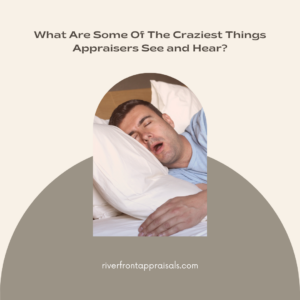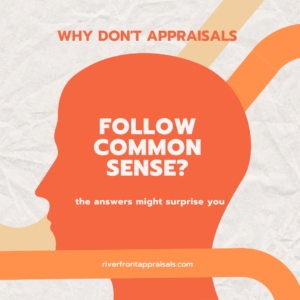
Property Taxes Just Went Up? We’ve Got You Covered!
It’s reassessment season for most folks in our area. Homeowners

Stereotyping. Discrimination. Fair Housing. In part nine of our current series called Promoting Public Trust, we discuss these ideas, and how they relate to real estate appraisals. We’ll consider what an appraiser can and cannot say (or write), and why that matters to you – the homeowner.
To read more on this information, see USPAP Advisory Opinion AO-16 Note: Any italicized words you read are taken directly from USPAP*.
This post will be slightly shorter than some of our recent posts because we’ve covered various aspects of fair housing before, but never in detail as we’ll do today. I wanted to write about it, because it does deserve attention, especially in today’s world.
This topic is very important because Fair Housing laws prevent appraisers from using some information regarding protected groups (see below), and even more importantly, appraisers must always steer clear of any form of discrimination in their appraisal reports.
In the Conduct Section of our Ethics Rule, USPAP states that
An appraiser must not use or rely on unsupported conclusions relating to characteristics such as race, color, religion, national origin, gender, marital status, familial status, age, receipt of public assistance income, handicap, or an unsupported conclusion that homogeneity of such characteristics is necessary to maximize value (bold added for emphasis).
In some cases, even supported conclusions in assignments relating to characteristics such as race, color, religion, national origin, gender, marital status, familial status, age, receipt of public assistance income, handicap, or group homogeneity cannot be used because they are precluded by applicable law.
So what does this mean for the homeowner, when they have a copy of their appraisal report and they read something like “The subject is occupied by an 80-year old man with three great-grandchildren, and is in a market segment where all other purchasers are 30-year old professionals with no children.” Or, “the subject is located in a neighborhood predominantly occupied by refugees from XYZ country”
If you read comments like this in an appraisal report, what you may have is an instance where the appraiser has violated the ethics rule of USPAP. USPAP isn’t extremely clear what the ‘some cases’ are where supported conclusions might be ok, and others cannot be used – only that the times these supported conclusions can’t be used is if the characteristics referred to in the appraiser’s conclusions are precluded by law. So unclear or not, it’s just not a good idea to go there, as an appraiser.
Why is all of this important? If you’ve read my previous blog posts, you know I’ve mentioned more than a few times that an appraiser must always complete assignments with impartiality, objectivity, and independence. This is the hallmark of an appraiser. If an appraiser is making comments in a report about race, religion, familial status, or any other group listed above, it’s almost a sure bet that they’re not acting with impartiality, objectivity, and independence.
Here’s another bit of helpful information, directly from USPAP:
Appraisers should exercise care that comments made in a report will not be perceived as illegally biased or discriminatory. Factual descriptions, rather than subjective phrases, allow users of a report to draw their own conclusions. The use of terms that reflect a scale such as “high,” “low,” “good,” “fair,” “poor,” “strong,” “weak,” “rapid,” “slow,” “average,” or the like should also provide contextual information that properly explains the frame of reference and the relative position of the subject property on the scale.
What are some examples?
Let’s assume I’m appraising a home of an elderly woman who is handicapped, and just can’t get around well. Her home is in a bit of disrepair, with some flooring damage, a leaky kitchen sink, and a roof that needed to be replaced three years ago. What I shouldn’t say is anything relating to the occupant’s handicap status, as it relates to the condition of the home. Because really, do I know for sure that because she’s handicapped, she can’t make these repairs? No! Even if I did, it wouldn’t be appropriate to make such a comment. Instead, I should comment on the deficiencies, and make my case for the condition of the property as it relates to the rest of the home, and to all upgrades made or deficiencies noted.
Now here’s another part to this example. As I mentioned, the homeowner is handicapped. So we may assume that there are bars in the bathtub, maybe a ramp outside leading up to the porch, or maybe wide, wheelchair accessible hallways. Is it ok to mention these items? Yes! To quote USPAP again,
The appraiser should reflect market preferences for the components of the structure. However, the appraiser should not draw an unsupported conclusion that the fixtures either enhance or diminish value.
So yes, I’m going to mention that the home is equipped with certain handicap-accessible amenities, but I will not state in my report that they add or detract from the subject’s value.
Here’s one last helpful illustration about ‘high-crime areas’. Again, I’m quoting directly from USPAP:
An appraiser is completing an assignment in an area where crime activity has recently been publicized. The appraiser considers the use of the term “high-crime area.”
This is a subjective term that may be understood by the appraiser but may mislead the client. This term does not provide the evidence that the appraiser used in making the observation. The appraiser may provide a specific reference that is factual and objective (e.g., one crime per 100 people or one crime per 1,000,000 people) but may still mislead the client. If the appraiser is to be competent with these types of statistics, the crime ratio should be correlated to the actions of the market in reflecting a valuation adjustment or other indication of property demand. If all of the comparables used by the appraiser are from a market sharing the same crime characteristic, the appraiser should question whether the term and/or the statistic(s) are relevant to the appraisal assignment.
In English, you ask?
Ok. So I’ve been asked to appraise a home in an area of town where crime rates are ‘high’. The question before us is ‘is it ever a good idea to mention a high-crime area in an appraisal report?’ As USPAP states, this (‘high-crime) is a subjective term, and without detailed explanation, the appraiser may be inadvertently misleading the client (another big no-no). It’s interesting to note that USPAP says even if I present a page worth of factual evidence taken directly from our police department, it still may mislead the client. So we have to be very careful about that, but more importantly, if we make such statements, we have to be 100% sure how they relate to the market. How does the crime rate impact values in this neighborhood, for example (and I’d have to have proof)? Finally, as I’ve written about before, location is king in real estate. So if sales are available, I’m going to be including the most recent & proximate sales I can. And, again if they’re available, they’ll all be from the same market segment as the subject, and likely within that same ‘high-crime’ area. And if so, then how are any of the crime statistics relevant? I won’t be making any adjustments to the sales for location or anything like that because they’re all located in the same market. So it likely becomes irrelevant at that point, and again – possibly misleading to the client.
I’ve reviewed a few appraisals in my now 15+ years as an appraiser, and I’ve yet to come across anyone who has been so careless to make some of the mistakes I’ve written about here. However, I’ve seen more of my fair share of times when things were just a little too close for comfort. As appraisers, we are tasked with providing our clients with impartial, objective, and independent appraisal reports, and all in a way that does not mislead. Appraisers often get blamed for the opposite, though. I’ve been accused of not liking someone’s backyard, and for not liking horses (true stories!). Both led to value opinions lower than what the homeowner expected. Other appraisers, far more seriously, have been accused of racism and bigotry. I’m here to say that if any appraiser acts in a way that is biased for or against anyone no matter who they are or where they live, then that person is no longer an appraiser. It’s just that simple.
[bctt tweet=”I’m here to say that if any appraiser acts in a way that is biased for or against anyone no matter who they are or where they live, then that person is no longer an appraiser. It’s just that simple. ” username=”RiverfrontApp”]
Remaining independent and unbiased in the words we write in our reports is just one of the ways appraisers can continue to promote public trust. The next time you receive an appraisal report back, you can rest assured that your appraiser has done his or her best job to remain 100% unbiased in every way.
Helping homeowners navigate the appraisal process,
Ryan Bays, SRA, AI-RRS
*USPAP is published and copyrighted by The Appraisal Foundation.
Appraisal Standards Board, The Appraisal Foundation, 2020-2021 Uniform Standards of Professional Appraisal Practice (USPAP), Washington, DC, 2020.
Riverfront Appraisals has been granted permission by the Appraisal Foundation to use this information.

It’s reassessment season for most folks in our area. Homeowners

I feel like we all need a laugh. How about

So this may be a slight break from the norm,
Riverfront Appraisals has been providing comprehensive valuations of residential properties to Western Kentucky and Southwestern Indiana since 2008.